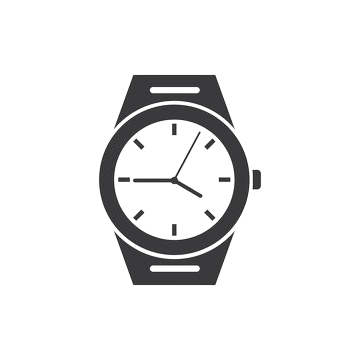In the world of horology, the quest for innovation is relentless. As watchmakers strive to combine tradition with cutting-edge technology, the materials used in timepieces play a pivotal role in defining their aesthetics, functionality, and durability. Recently, ceramics, titanium, and carbon fiber have emerged as game-changing materials in watchmaking, each offering unique advantages that enhance both the form and function of luxury watches.
Ceramics: Aesthetic and Durability
1. The Rise of Ceramic Cases
Ceramic, particularly high-tech ceramic, has gained popularity for its exceptional scratch resistance, lightweight nature, and vibrant color possibilities. Unlike traditional metals, which can tarnish or scratch easily, ceramic maintains its appearance over time, making it an ideal choice for modern watchmakers.
2. Design Flexibility
Ceramic can be produced in various colors, allowing for creative design possibilities that are hard to achieve with metals. Brands like IWC and Hublot have experimented with colored ceramics, introducing pieces that stand out with bold aesthetics while retaining the toughness and resilience associated with ceramic materials.
3. Skin-Friendly Properties
Another significant advantage of ceramic is its hypoallergenic nature. This makes it an excellent choice for individuals with sensitive skin, expanding the potential audience for luxury timepieces. As watches increasingly become fashion statements, the comfort of wearing them is paramount.
Titanium: Strength and Lightweight Performance
1. The Strength of Titanium
Titanium has long been celebrated for its strength-to-weight ratio. It is significantly lighter than stainless steel, making it ideal for larger watch cases without compromising comfort. Brands like Omega and TAG Heuer have utilized titanium in their timepieces, catering to adventurers and athletes seeking durable yet lightweight watches.
2. Corrosion Resistance
One of the standout properties of titanium is its exceptional resistance to corrosion. This makes it suitable for diving watches or timepieces designed for rugged environments, as they can withstand harsh conditions without showing signs of wear.
3. Innovative Finishes
Titanium can also be treated to create unique finishes. Brands have explored various surface treatments, such as sandblasting or anodization, to enhance the aesthetic appeal of titanium watches. These techniques not only improve appearance but also increase scratch resistance.
Carbon Fiber: High-Tech Elegance
1. The Appeal of Carbon Fiber
Carbon fiber has revolutionized the watch industry, especially in sports and racing watches. Known for its exceptional strength and lightweight properties, carbon fiber is often used in cases and dials, offering a modern aesthetic that appeals to tech-savvy consumers.
2. Unique Textures and Patterns
The distinctive woven texture of carbon fiber provides a visually striking element to watch designs. Brands like Richard Mille and Bell & Ross have embraced this material, incorporating it into their high-performance models. The result is a fusion of functionality and avant-garde design that stands out in a crowded market.
3. Impact Resistance
Carbon fiber is renowned for its shock-absorbing properties, making it ideal for sports watches that must endure the rigors of physical activity. This resilience ensures that watches maintain their integrity, even in challenging conditions, appealing to athletes and active individuals alike.
The Future of Material Innovations
As watchmakers continue to push the boundaries of design and technology, the exploration of new materials will only accelerate. Future innovations may include:
1. Sustainable Materials
The watch industry is increasingly focusing on sustainability, leading to the development of eco-friendly materials. Brands are beginning to experiment with recycled metals, bioplastics, and other sustainable alternatives, appealing to environmentally conscious consumers.
2. Smart Materials
With the rise of smartwatches, there is potential for the integration of smart materials that can change properties based on user interaction or environmental conditions. Imagine a watch that adjusts its color or texture based on temperature or lighting—this could redefine the concept of personalization in horology.
3. Hybrid Materials
Combining different materials can lead to unique properties and aesthetics. For instance, blending titanium with carbon fiber could result in a watch that is both ultra-light and incredibly strong, pushing the boundaries of what’s possible in watchmaking.
Conclusion
The innovations in materials such as ceramics, titanium, and carbon fiber are redefining the landscape of watchmaking. These materials not only enhance the functionality and durability of timepieces but also open up new avenues for design and personalization. As brands continue to experiment and innovate, the future of watchmaking promises to be as exciting as ever, merging artistry with cutting-edge technology. Collectors and enthusiasts can look forward to a new era of horological excellence, where materials play a key role in crafting the perfect timepiece.



